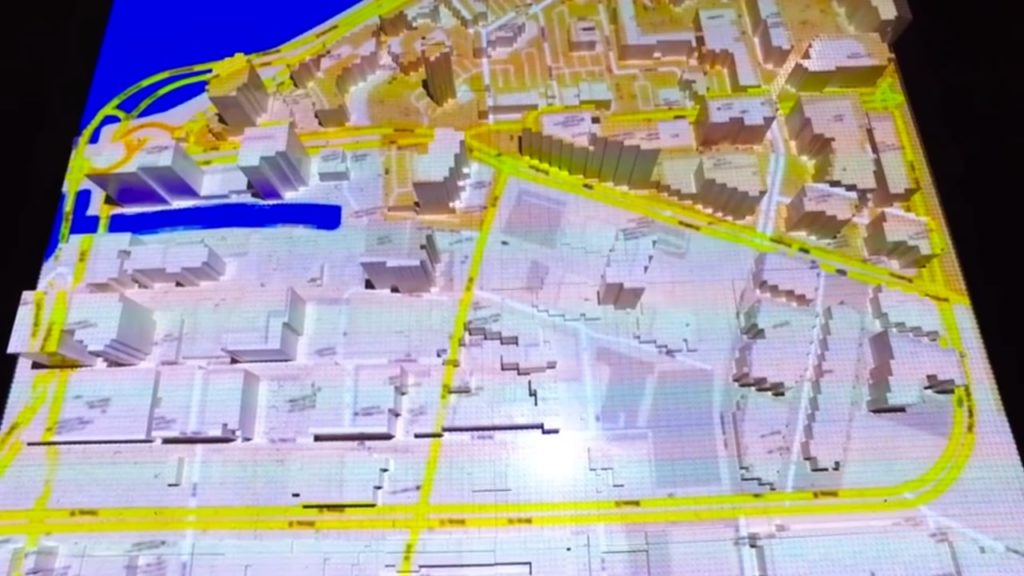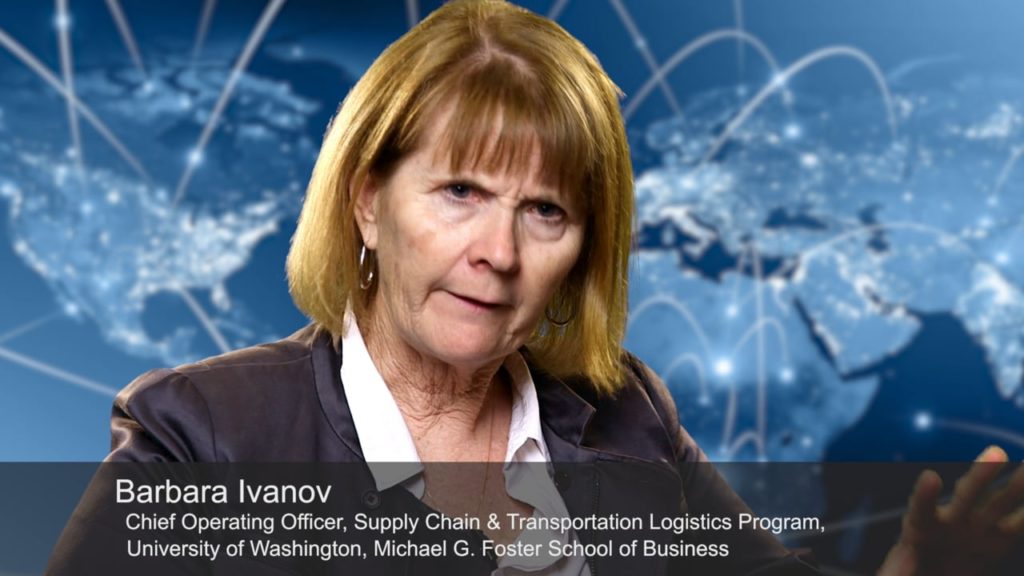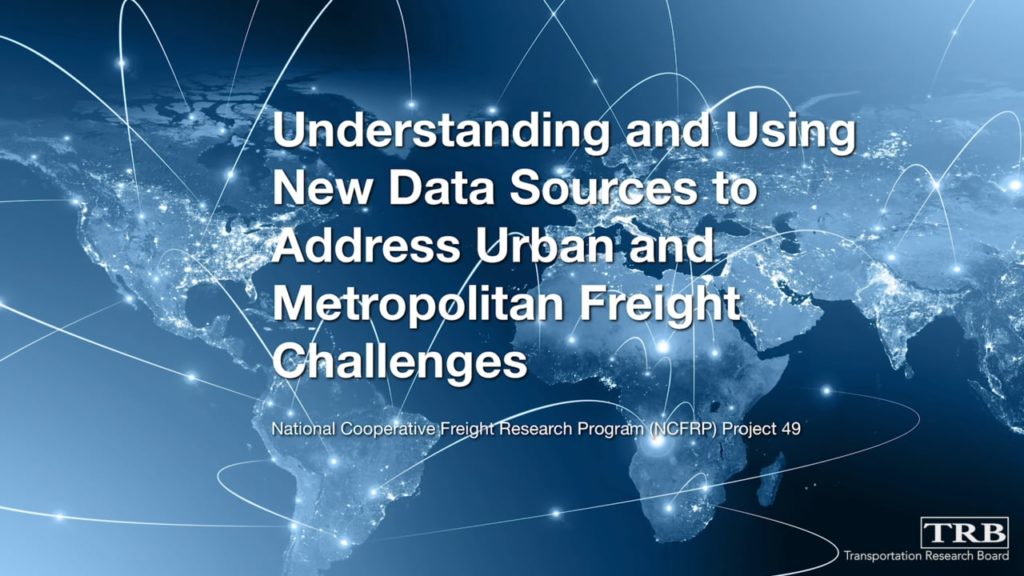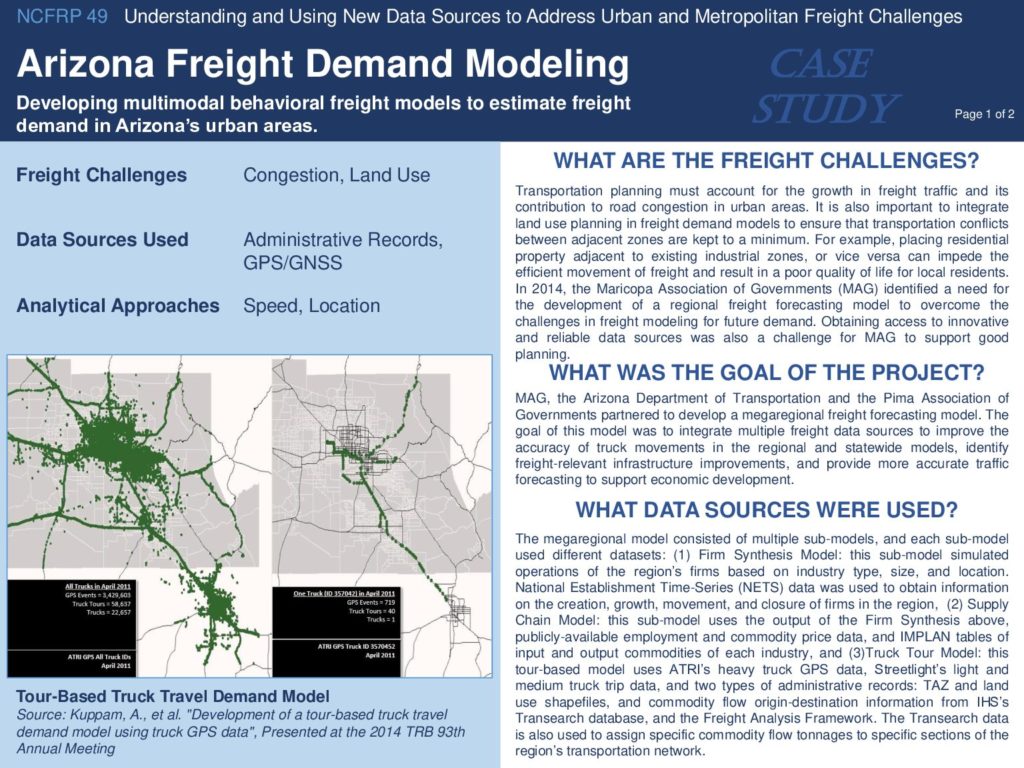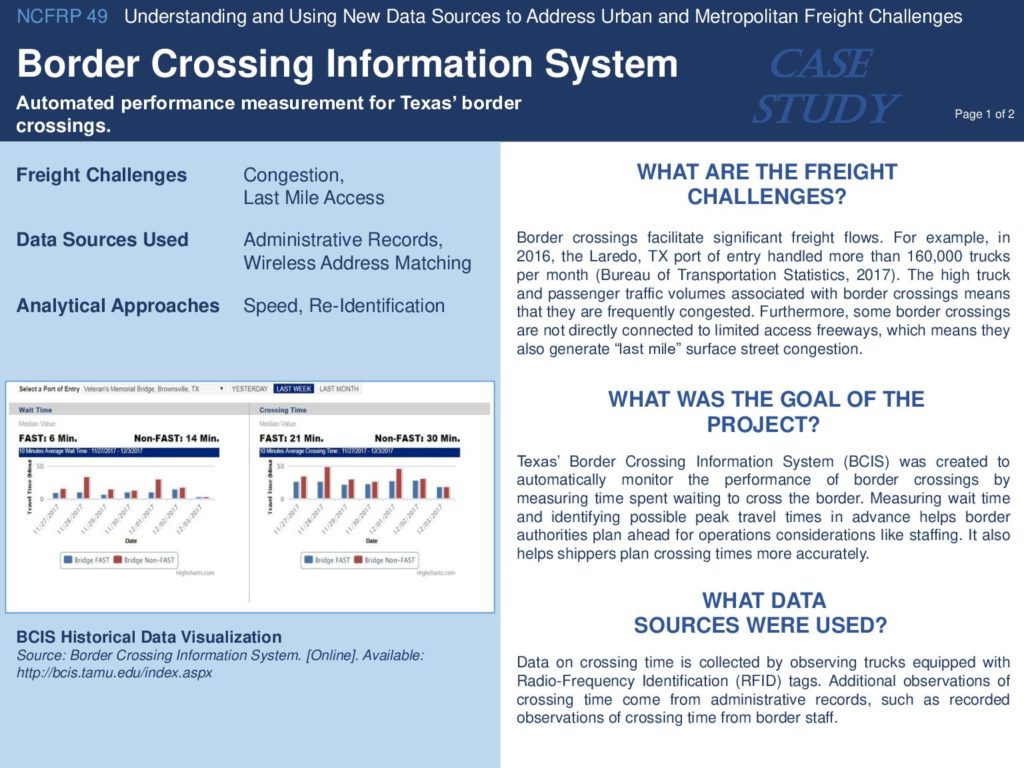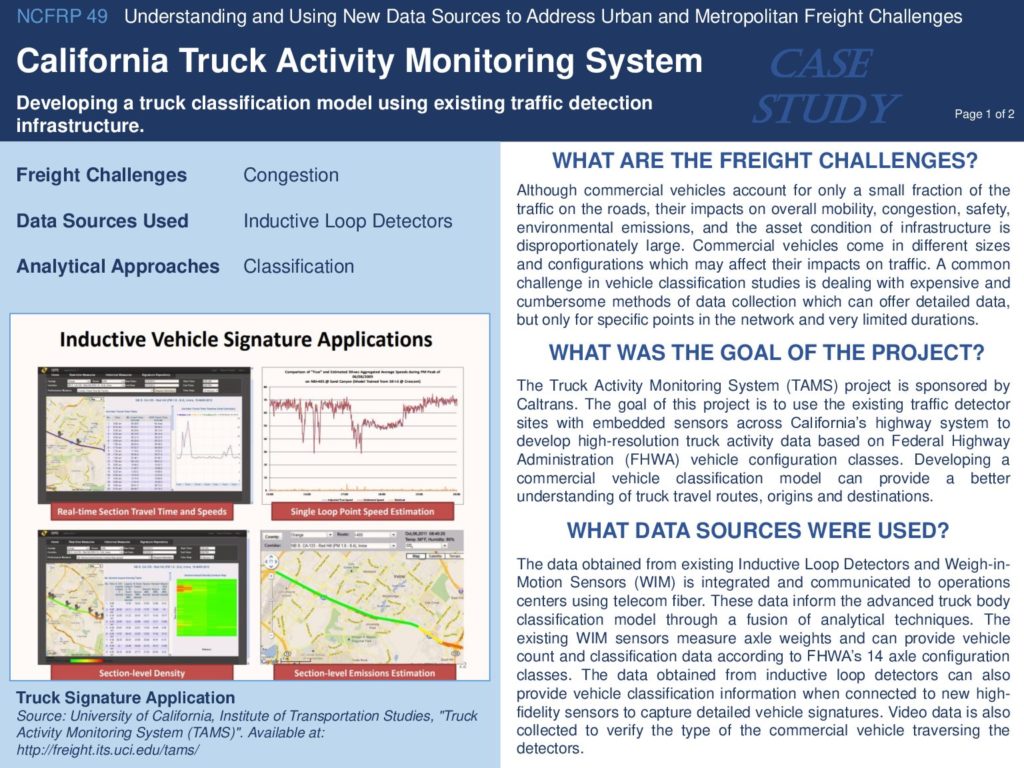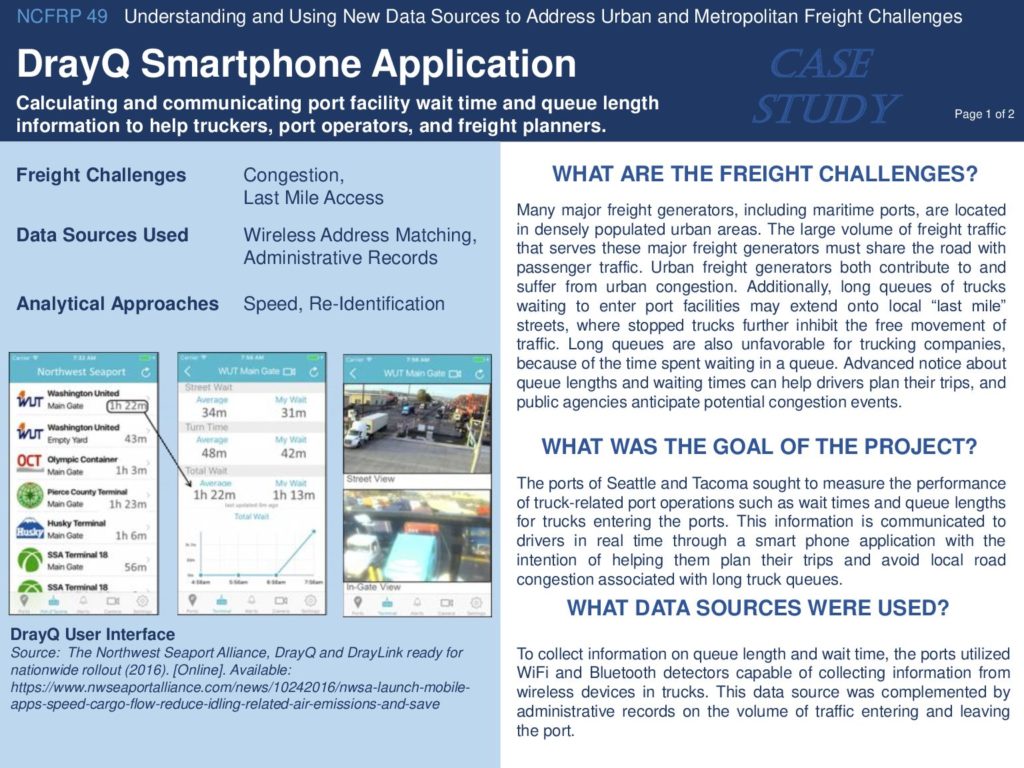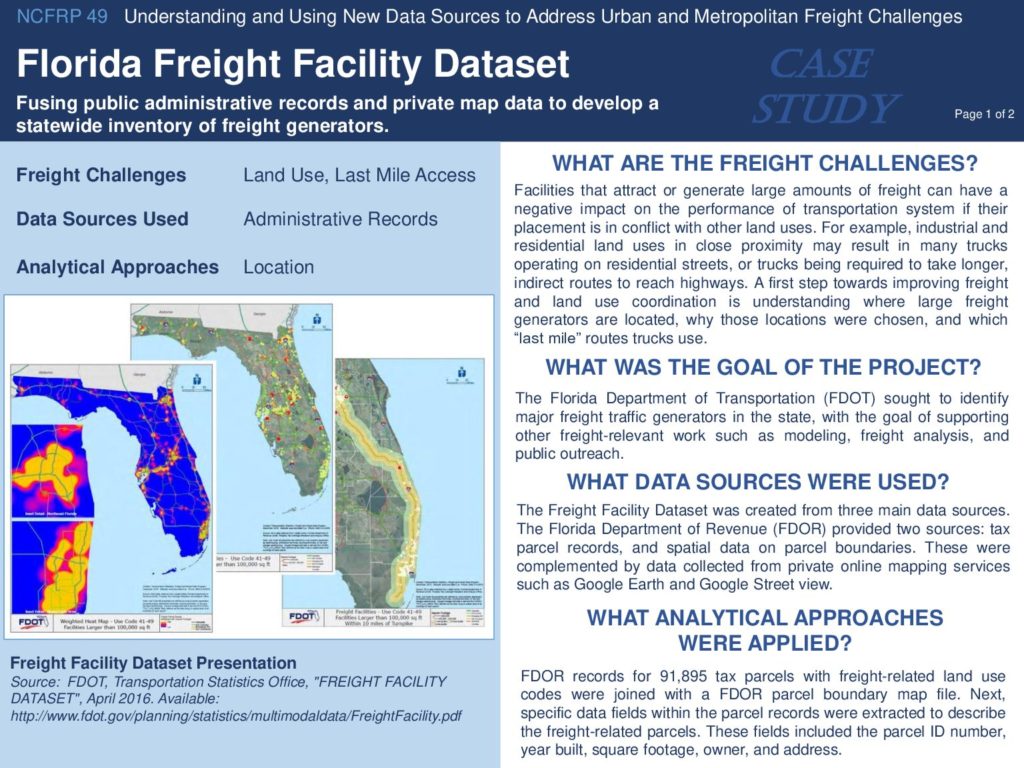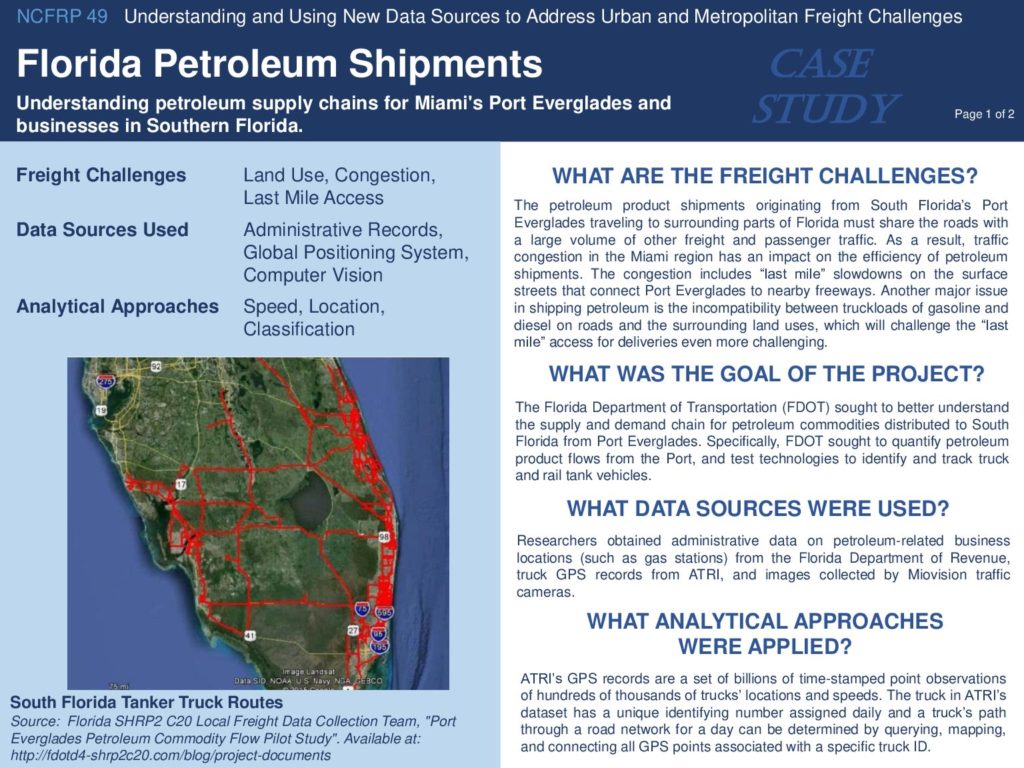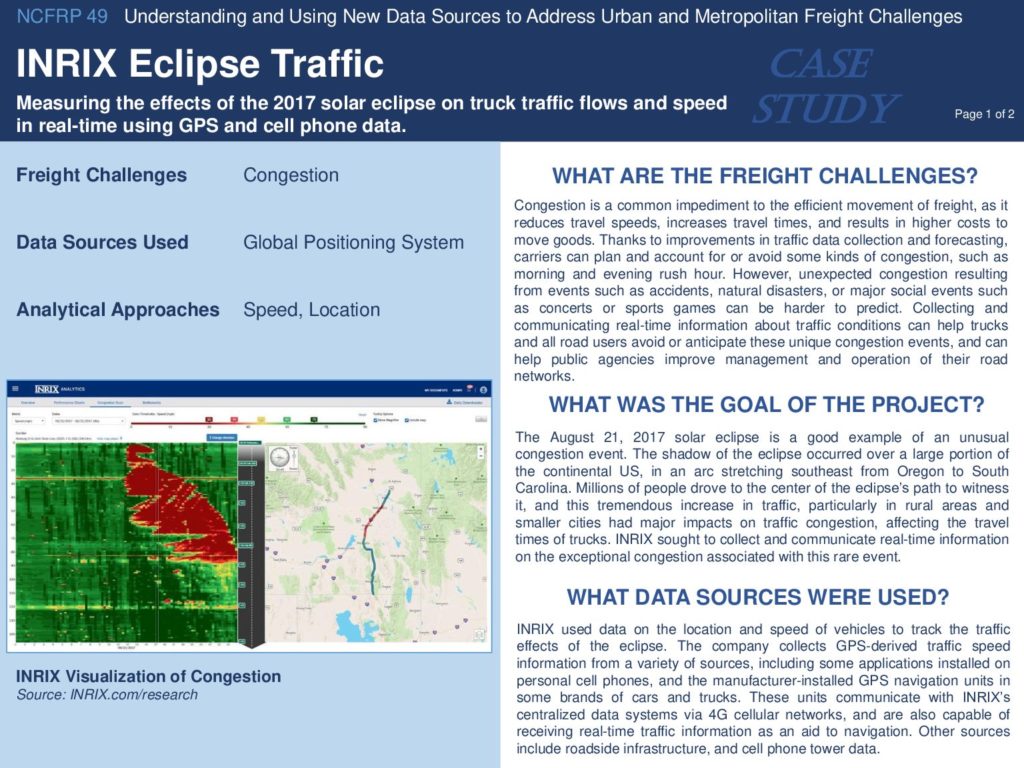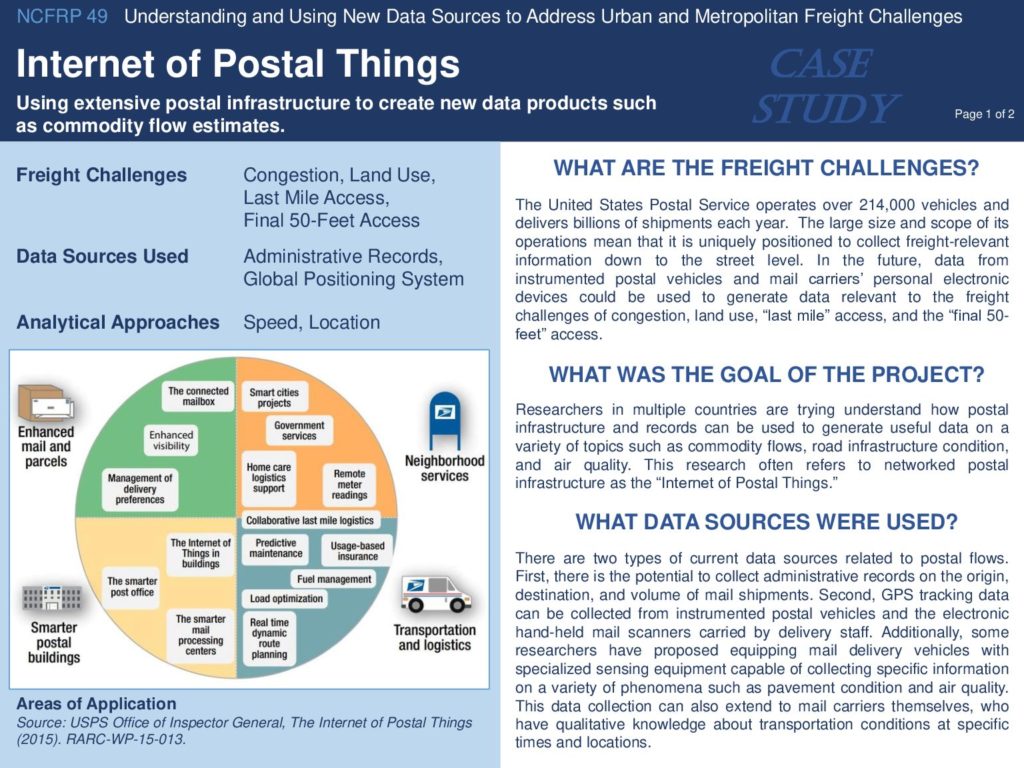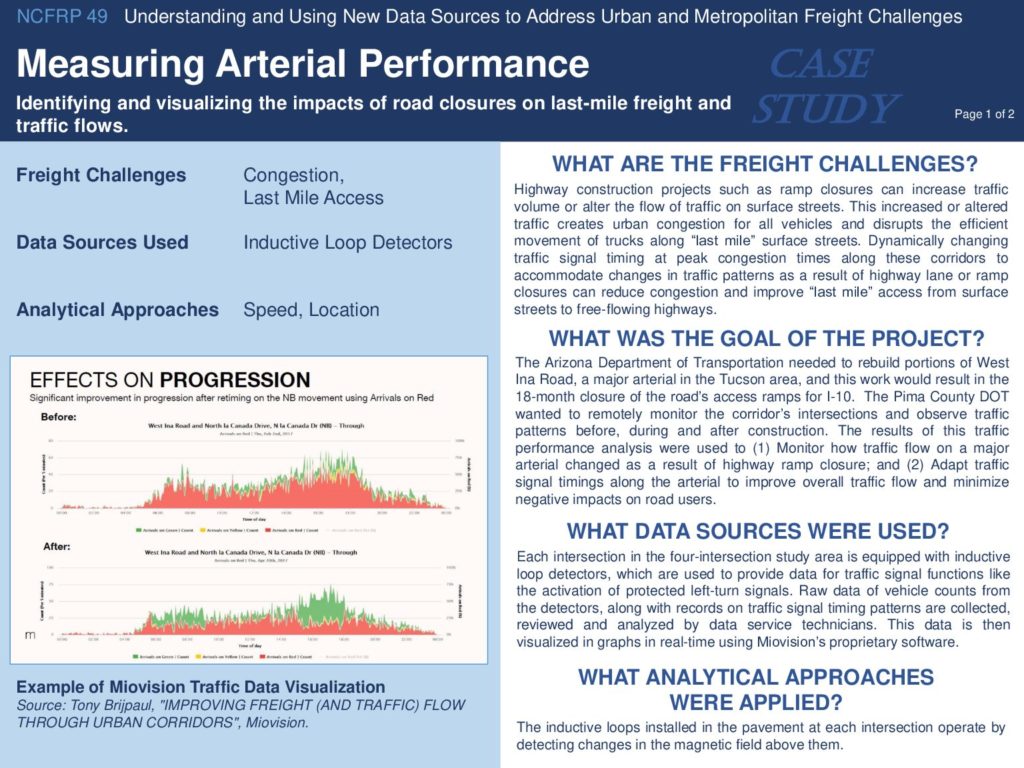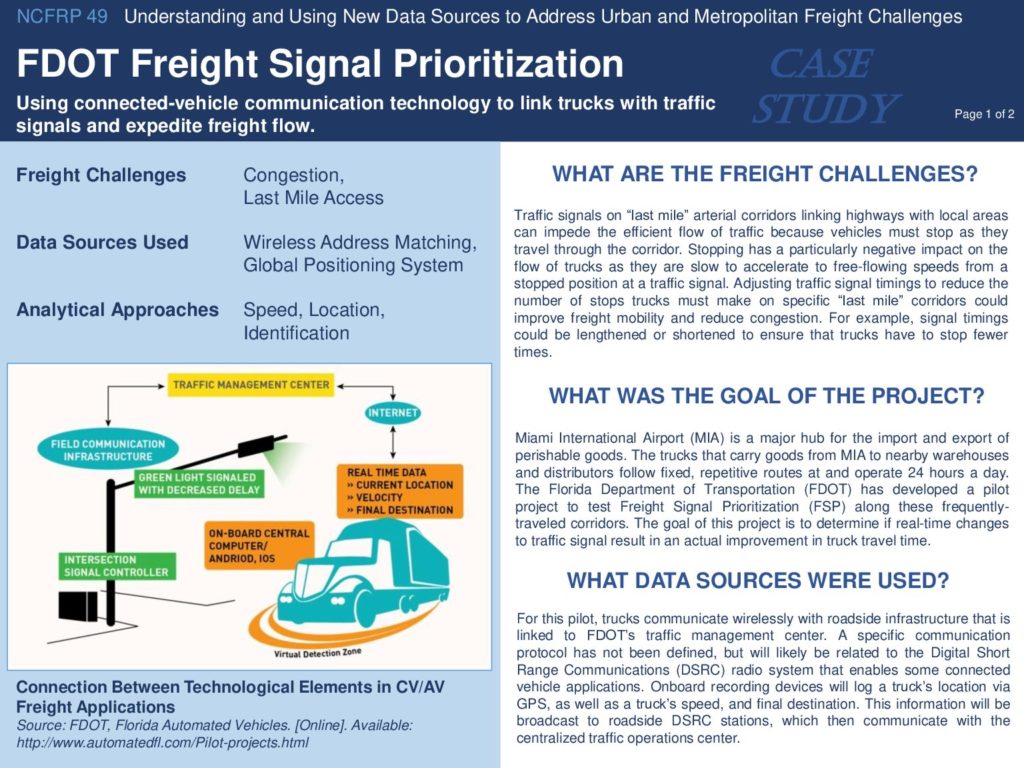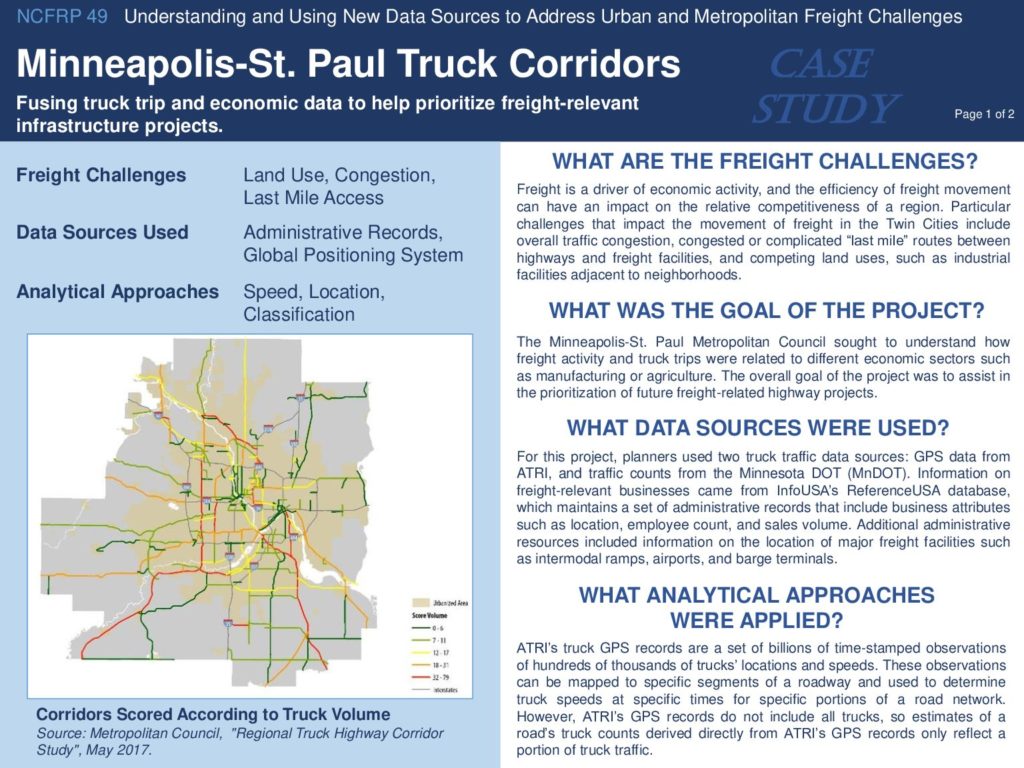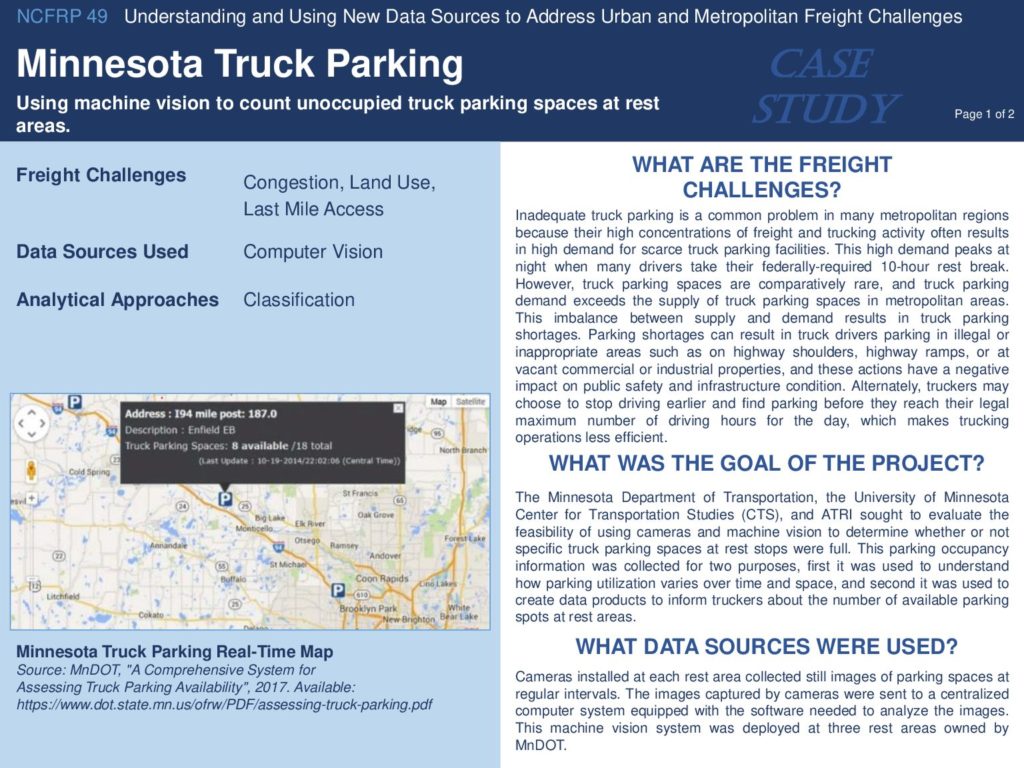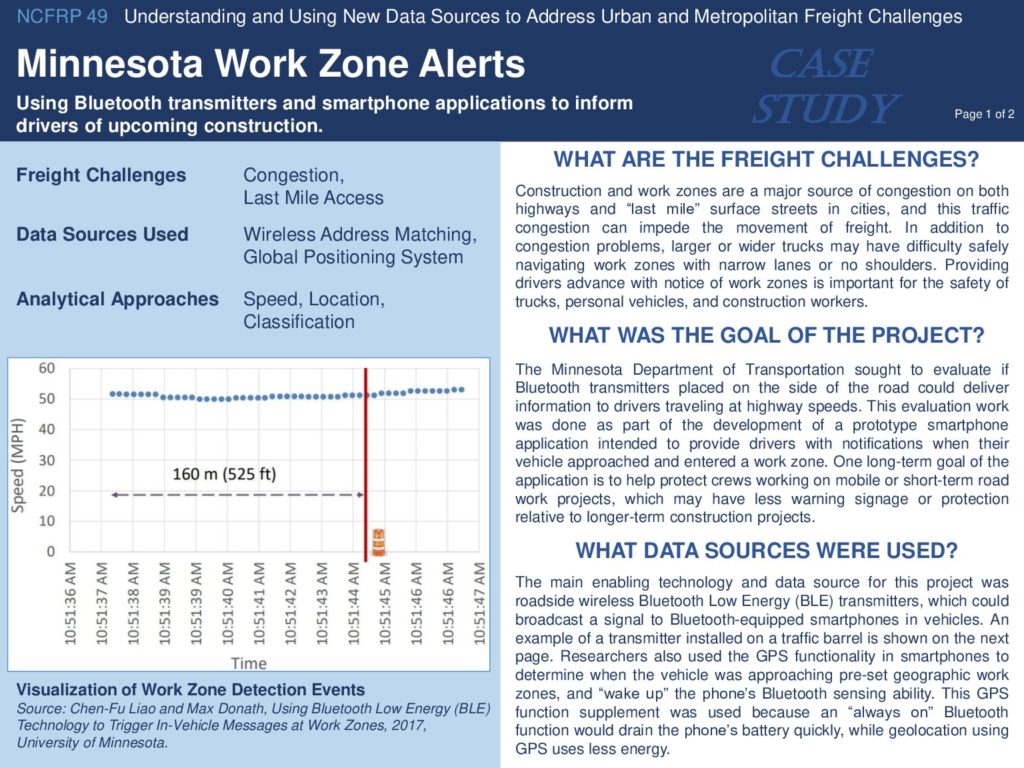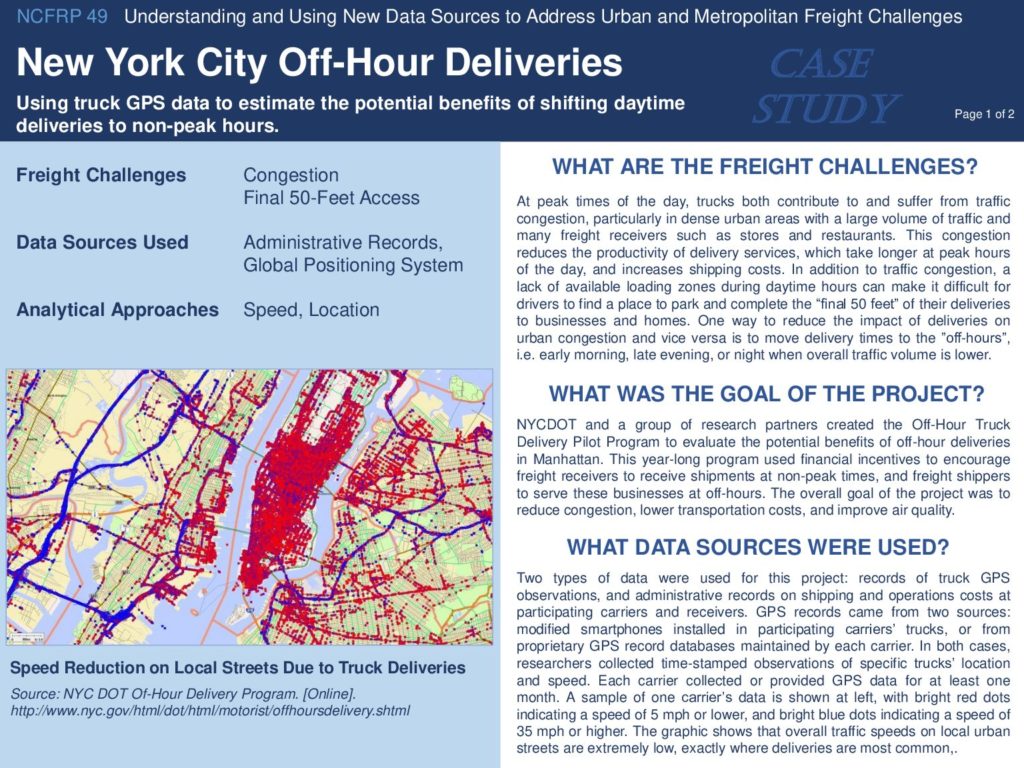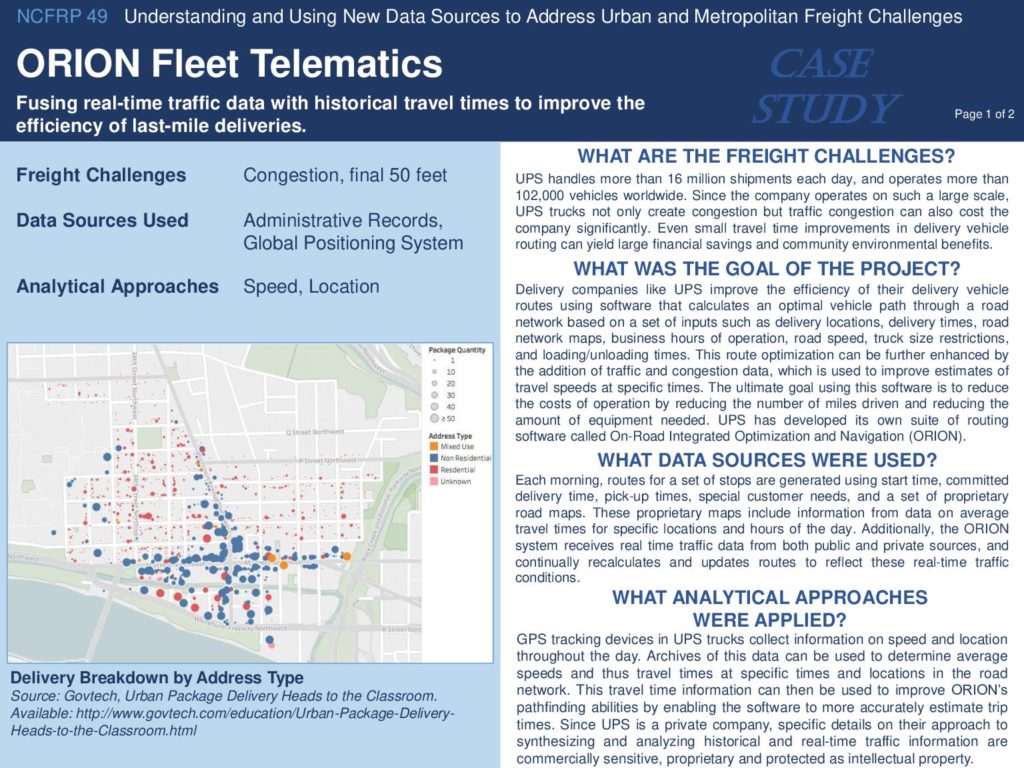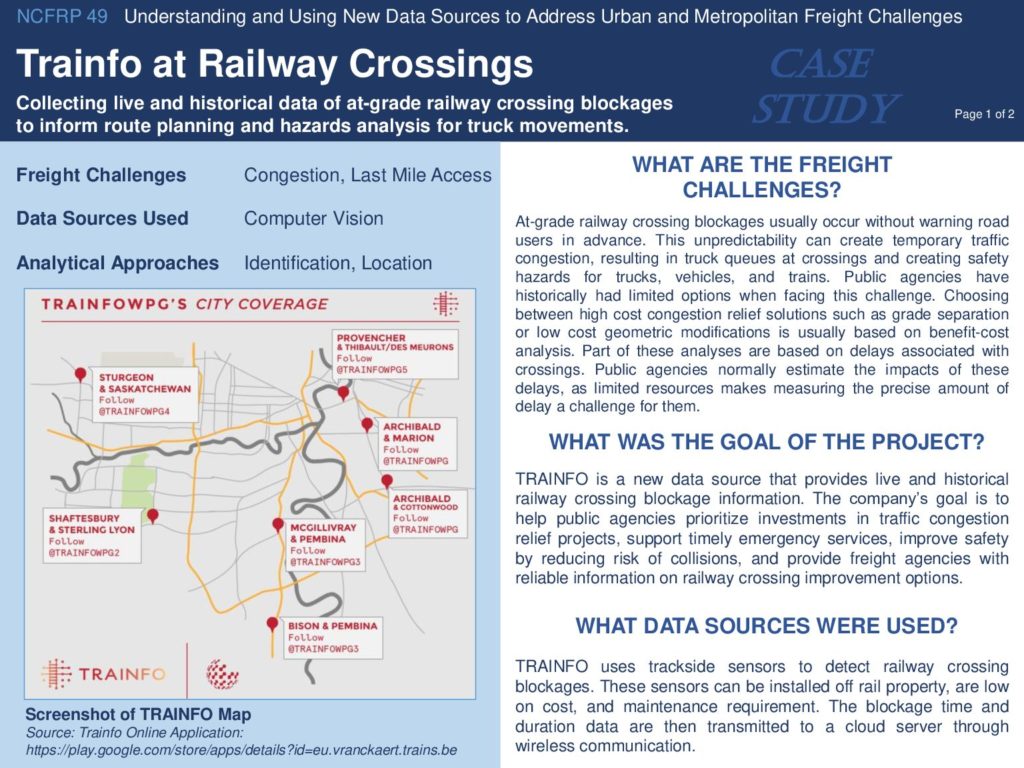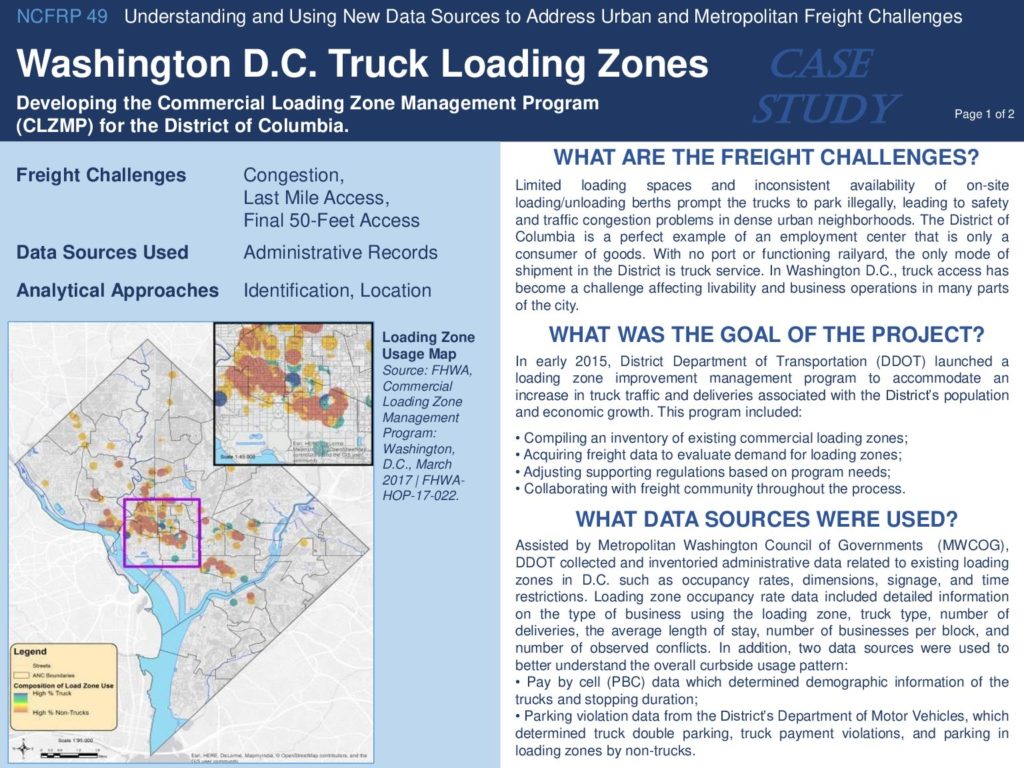Main Content
Understanding and Using New Data Sources to Address Urban and Metropolitan Freight Challenges
National Cooperative Freight Research Program (NCFRP) Project 49
Transportation Research Board (TRB)
The rapid explosion of new freight data sources is creating significant opportunities for more effective and well-targeted planning and operation of roadways, particularly in urban and metropolitan areas. This research explored how new sources of freight data, including “big data” from smart cities initiatives, crowd-sourcing (e.g., via smartphones, vehicle fleet tracking), sensors (e.g., vehicle-to-infrastructure, vehicle-to-vehicle), and cameras are being or could be used to address urban and metropolitan freight challenges.
The specific objectives of this research were four-fold:
- Problem: Understand persistent urban and metropolitan freight challenges facing transportation agencies
- Opportunity: Identify and assess new and emerging freight data sources
- Applications: Assess the analytical approaches and techniques that could employ these new data sources to address freight challenges
- Value Proposition: Recommend how agencies can leverage new data sources and analytics while overcoming practical and institutional challenges
Executive Summaries
This website was reviewed by the technical panel and accepted for publication according to procedures established and overseen by the Transportation Research Board and approved by the National Academies of Sciences, Engineering, and Medicine. The opinions and conclusions expressed or implied in this website are those of the researchers who performed the research and are not necessarily those of the Transportation Research Board; the National Academies of Sciences, Engineering, and Medicine; or the program sponsor. The Transportation Research Board; the National Academies of Sciences, Engineering, and Medicine, and the program sponsor do not endorse products of manufacturers. Trade or manufacturers’ names may appear solely because they are considered essential to the object of the research.
